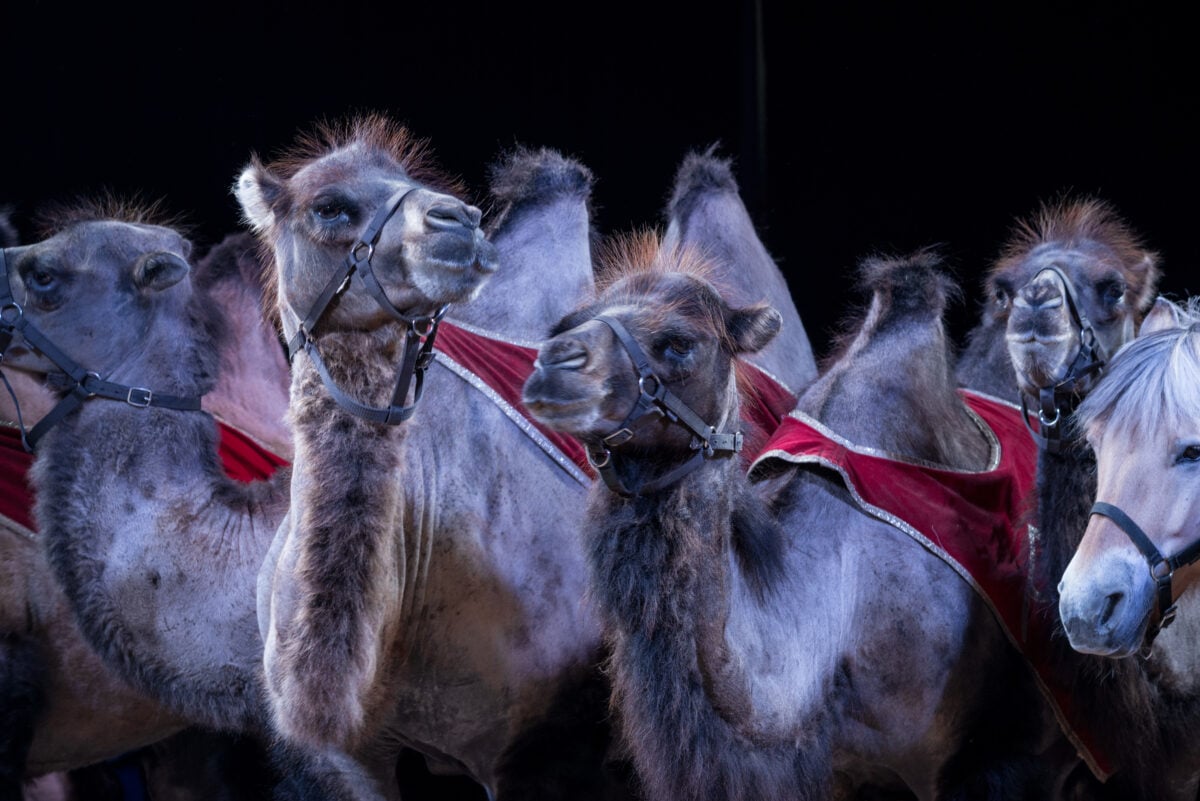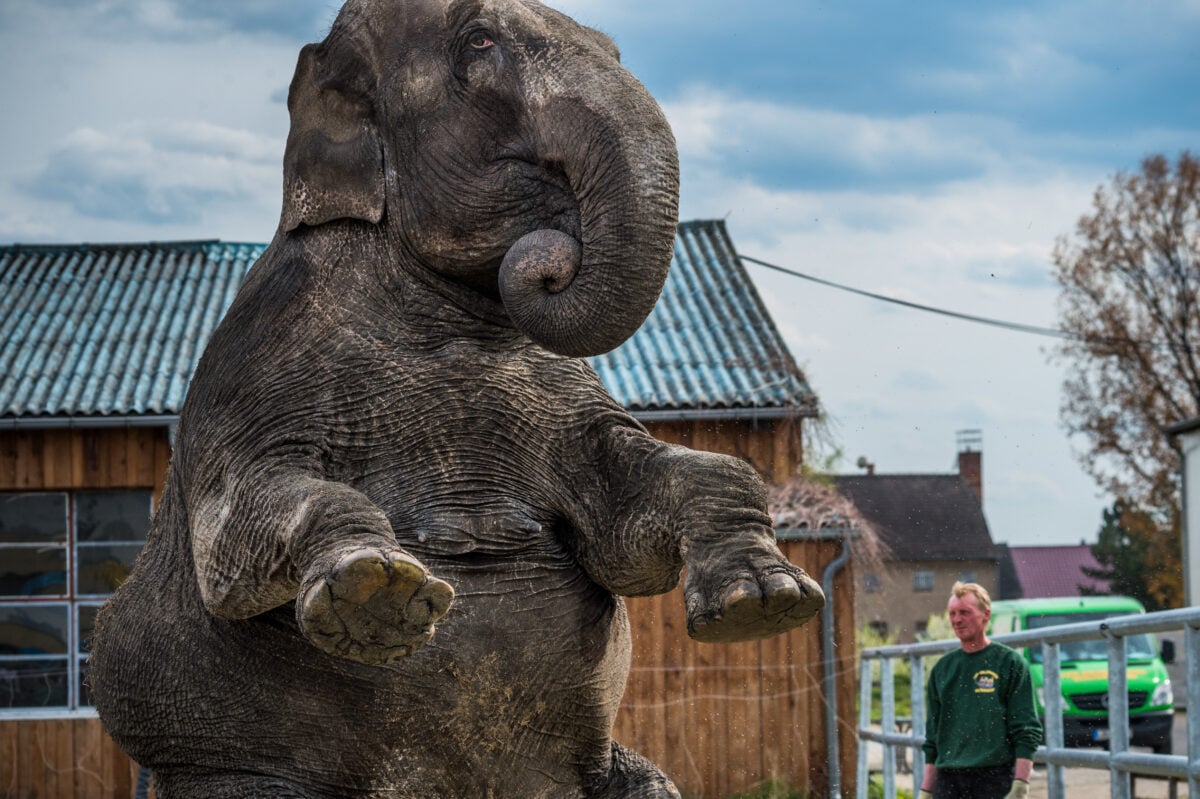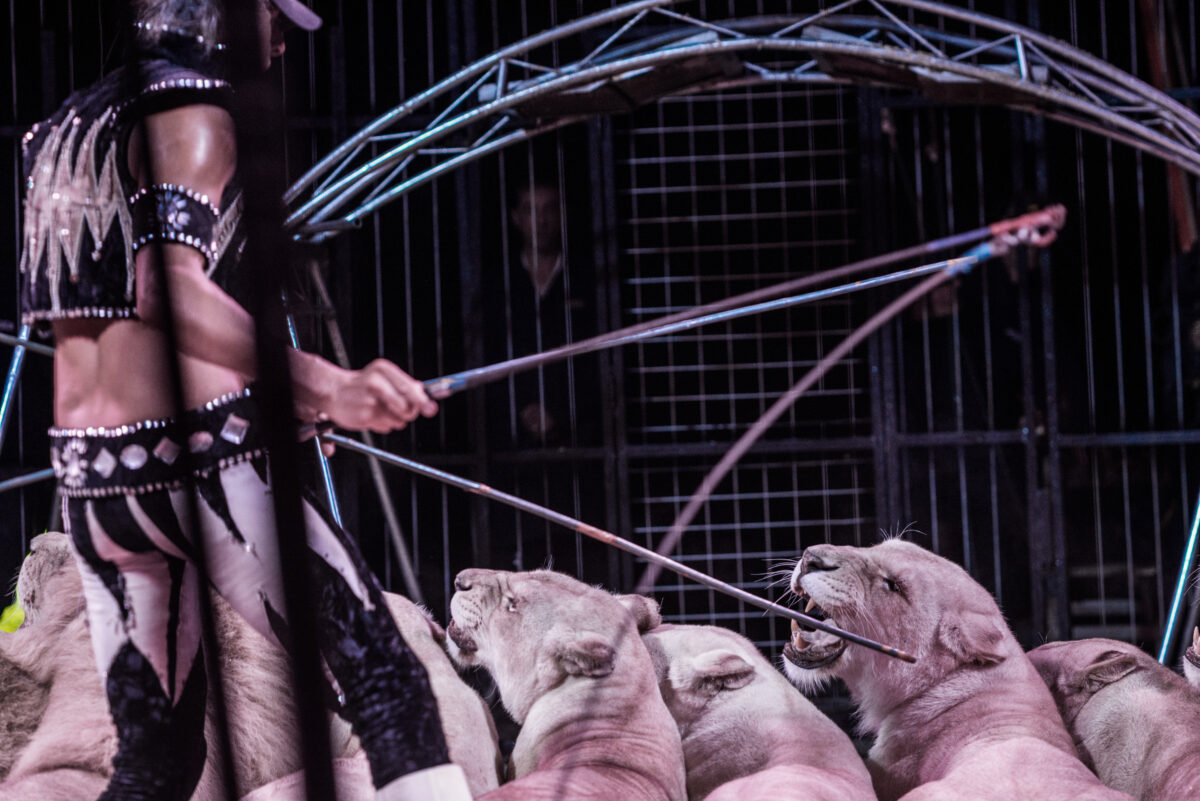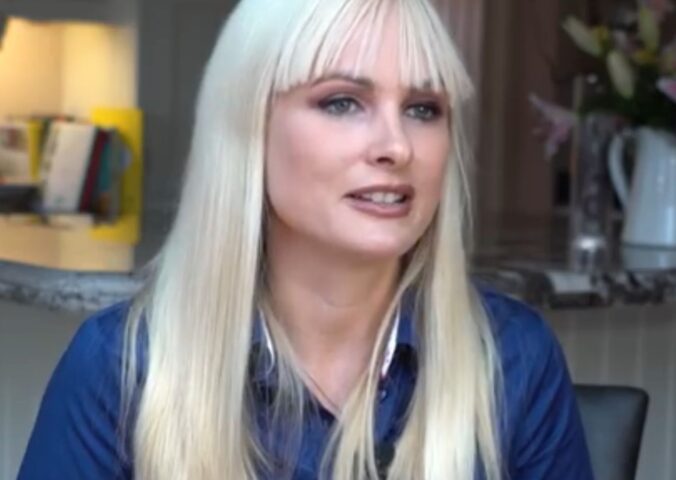Circuses have featured performing animals since their inception. As people have become more concerned about cruel tactics used to train many “circus animals,” the number and types of animals used in circuses has diminished. Nearly 30 countries now have bans on the use of wild animals in circuses.
But “domesticated” animals such as dogs and horses may still appear in circuses in countries with wild animal bans. Those running circuses often defend the use of animals and say they are treated well.
Even if that is the case, attending a circus that uses animals is not considered compatible with veganism. Veganism is a movement against animal exploitation and all industries that use them as commodities. For vegans, circuses with animals are no different to horse racing, marine parks that make animals perform, or zoos that profit from keeping animals captive.
Here is what you need to know about animals used in circuses.
What animals are used in circuses?

Horses were the original “circus animal.” The modern circus, with performers and animals entertaining people inside a Big Top, can be traced back to 1768 when English equestrian Philip Astley began performing tricks on horseback. Horses still appear in circuses today, carrying trick riders or performing synchronized movements together, usually while wearing headdresses and other adornments.
Using wild and exotic animals in circuses evolved from the existence of traveling menageries at fairs. Elephants, lions, tigers, zebras, hippos, camels, bears, rhinos, alligators, primates, and birds have all been used in circuses, and many are still forced to perform in them. Carden Circus in the US, for example, uses elephants and camels. There are thought to be hundreds of wild animals in circuses in the country.
How are ‘circus animals’ treated?
Many animals in circuses are kept in environments that are considered too small small and unable to meet their needs. They spend a lot of their time confined to “beast wagons” or chained up in trucks. A 2006 report on animal welfare in circuses in England and Wales found that accommodation provided for the animals was variable in quality, with little thought given to enrichment and species-specific needs.
Circuses have been exposed for using cruel methods to train and subdue animals. One of the most well-known traveling circuses of the 20th century was Ringling Bros and Barnum & Bailey, known also as “The Greatest Show on Earth.” The circus kept many wild animals including lions, tigers, and elephants. The animals, particularly baby elephants, were subjected them to extremely cruel training methods. These included what PETA termed “breaking their spirits” by tying them down and beating them.
The circus was founded in 1919 but closed in 2017 following falling ticket sales and numerous animal rights protests. It is being revived this autumn without any animals.
Traveling as part of a circus is also stressful for animals. Noise, trailer movement, handling, and confinement are all features of traveling that can negatively affect their welfare.
Many “circus animals” are bred in captivity, while some are unwanted zoo animals. Other have been taken from the wild. The UK’s last circus elephant, Anne, was stolen from her Sri Lankan forest home when she was five years old.

Domesticated animals such as dogs and horses used in circuses don’t necessarily fare much better. They are also exposed to noisy crowds, bright lights, and spend a lot of their time confined and on the move. In 2016, Peter Jolly’s Circus, which bills itself as “a family fun traditional animal circus” was found by Animal Defenders International to be keeping animals in an overcrowded barn over the winter months.
For some periods, horses and ponies were tethered for hours without access to water, and stressed out horses would attack each other. Two zebras were also kept in a small pen, while a camel and ankoli – an African cattle breed – were tethered for 24 hours.
Circus animal bans

More than 50 countries now have bans on the use of wild animals in circuses or restrictions on what animals can be used in circuses. Only a handful have a general ban on using animals in circuses, including Bolivia, Cyprus, and Malta.
In England, Scotland, and Wales, it is illegal to use wild animals in circuses. While there is no law banning the practice in Northern Ireland, it isn’t thought there are any wild animal circuses in the region. Domesticated animals may still be used.
In the US there are partial or full bans on using animals in circuses in cities or counties within 29 states.
Travel companies have begun to take a stand against the use of animals in circuses too. A Hong Kong-based travel company recently announced that it will stop selling trips to circuses and some other business that use wild animals.
Are there animal-free circuses?
Circuses can be great entertainment when they don’t exploit animals. Cirque du Soleil, which began in Quebec in 1984 as a small group of street performers, has become a global phenomenon without ever using animals. But there are many others too, with around 18 non-animal circuses in the US, such as Circus Vargas and Cirque Italia.
In Germany, Roncalli Circus has replaced live animals with holograms after it stopped using lions and elephants in its shows in 1991 and all animals in 2018. In the UK, Zippos Circus stopped using animals in 2019 and now specialises in all-humans shows.






